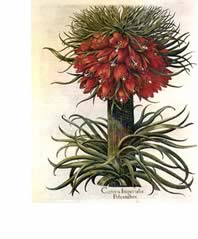 Koch and Kredel, a page from Das Blumenbuch Koch and Kredel, a page from Das Blumenbuch
 Thornton's Temple of Flora, The Narrow Leaved Kalmia aquatint 1790-1804 Thornton's Temple of Flora, The Narrow Leaved Kalmia aquatint 1790-1804
 selection from Emanuel Sweerts, Florlegium, Frankfurt, 1612 selection from Emanuel Sweerts, Florlegium, Frankfurt, 1612
 John Farleigh, Old Fashioned Flowers, 1933 John Farleigh, Old Fashioned Flowers, 1933
 Josef Weisz, Blumen der Alpen 1954 Josef Weisz, Blumen der Alpen 1954
 FROM SEMPSON, The Second Book of Flowers 1650 FROM SEMPSON, The Second Book of Flowers 1650
 A NIEWE HERBALL translated from the Dutch/ German by Henry Lyte 1578 A NIEWE HERBALL translated from the Dutch/ German by Henry Lyte 1578
|





















